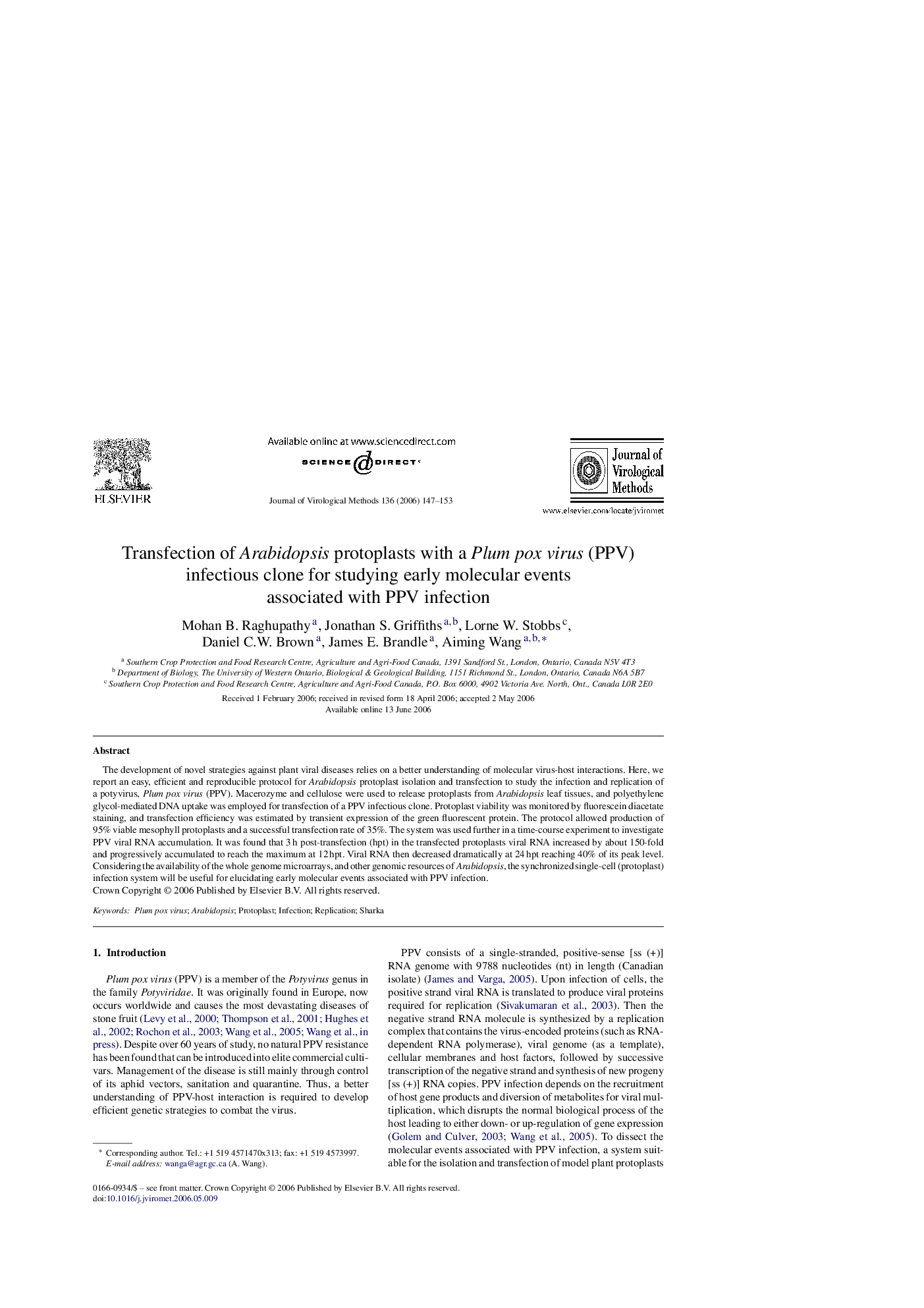| Article ID | Journal | Published Year | Pages | File Type |
|---|---|---|---|---|
| 3408541 | Journal of Virological Methods | 2006 | 7 Pages |
The development of novel strategies against plant viral diseases relies on a better understanding of molecular virus-host interactions. Here, we report an easy, efficient and reproducible protocol for Arabidopsis protoplast isolation and transfection to study the infection and replication of a potyvirus, Plum pox virus (PPV). Macerozyme and cellulose were used to release protoplasts from Arabidopsis leaf tissues, and polyethylene glycol-mediated DNA uptake was employed for transfection of a PPV infectious clone. Protoplast viability was monitored by fluorescein diacetate staining, and transfection efficiency was estimated by transient expression of the green fluorescent protein. The protocol allowed production of 95% viable mesophyll protoplasts and a successful transfection rate of 35%. The system was used further in a time-course experiment to investigate PPV viral RNA accumulation. It was found that 3 h post-transfection (hpt) in the transfected protoplasts viral RNA increased by about 150-fold and progressively accumulated to reach the maximum at 12 hpt. Viral RNA then decreased dramatically at 24 hpt reaching 40% of its peak level. Considering the availability of the whole genome microarrays, and other genomic resources of Arabidopsis, the synchronized single-cell (protoplast) infection system will be useful for elucidating early molecular events associated with PPV infection.
